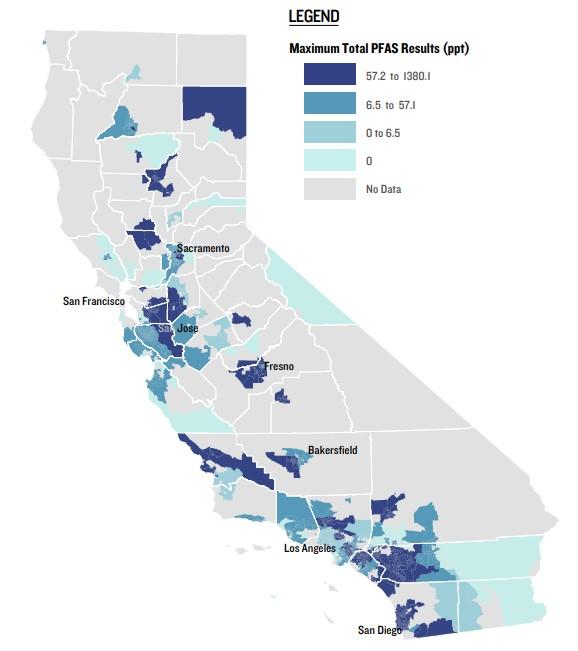[Blog] CA PFAS Pollution Widespread in Disadvantaged Communities
By Anna Reade and Susan Lee | NDRC | August 17, 2021

Read the full article by Anna Reade and Susan Lee (NDRC)
“NRDC’s new analysis of California’s drinking water testing for toxic, ‘forever’ chemicals known as PFAS reveals widespread PFAS pollution in the state, particularly in communities that are already overburdened by multiple sources of pollution. Our report, developed in collaboration with Community Water Center, Physicians for Social Responsibility – Los Angeles, and Clean Water Action, also shows that much more testing needs to be done to fully understand the full scope of the PFAS problem.
PFAS (per- and polyfluoroalkyl substances) are a class of thousands of extremely persistent chemicals that accumulate in the environment and living organisms. The use of PFAS in numerous consumer and industrial applications has led to widespread human exposure and environmental contamination. A broad range of adverse health outcomes have been linked to PFAS exposure, including kidney and testicular cancer, elevated cholesterol, liver disease, decreased fertility, thyroid problems, changes in hormone functioning, changes in the immune system, and adverse developmental effects.
In April 2019, California’s Division of Drinking Water issued an order to test public water systems located near potential PFAS sources for PFAS. In our report, we analyzed test results from April 1, 2019, to June 30, 2020, in which more than 1,300 drinking water sources from 248 active public water systems in California were tested for 18 different PFAS chemicals.
PFAS pollution is widespread in California
Out of the 248 active public water systems that were tested, 65% had PFAS detected in the drinking water. These polluted water systems serve more than 16 million people in total. The water systems are spread across the state, and many serve cities with large populations. For instance, the water systems serving Fresno, Corona, and San Diego, have some of the highest total PFAS result, and these three systems serve almost 2 million people (see Map 1 below).”…
This content provided by the PFAS Project.
Location:
Topics: